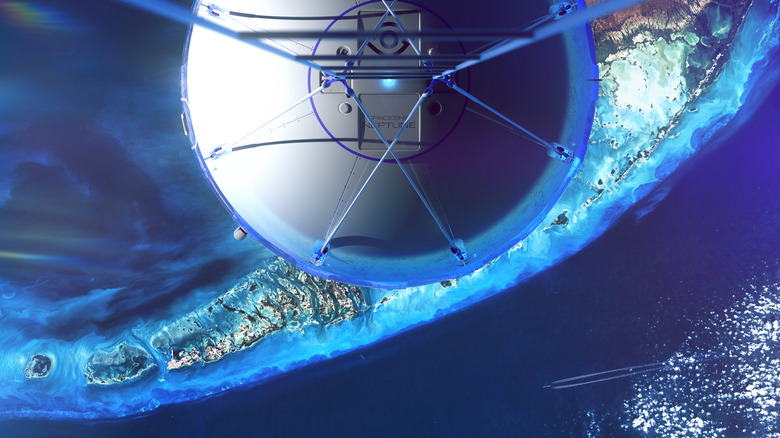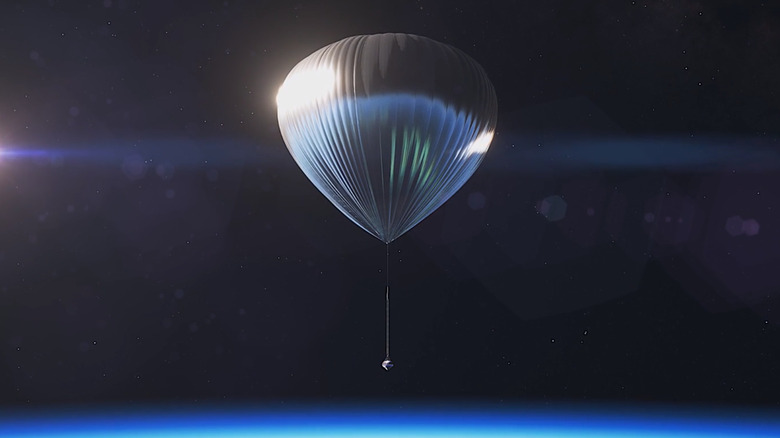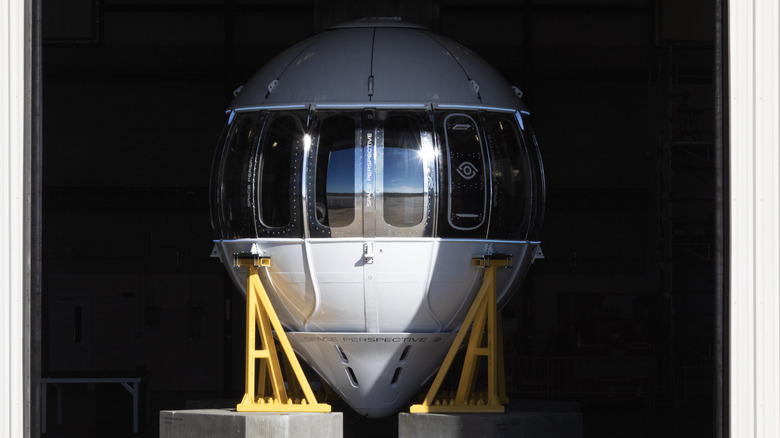Space Access Revolution: How Space Perspective Plans To Take The Throne From Blue Origin
Commercial space travel is a fairly small industry. Despite Elon Musk's plans for Mars colonization, your only two realistic choices when it comes to space tourism are Jeff Bezos' Blue Origin and Richard Branson's Virgin Galactic. But a third company has now entered the fray, with a unique focus on accessibility and sustainability. Space Perspective has completed and unveiled the third commercial sub-orbital spacecraft ever built, and it also boasts the honor of being the seventh human-carrying spacecraft built in the last five decades. It's all designed and built in-house, with every major element patented. The capsule, which has been named "Excelsior," forms part of the company's Spaceship Neptune craft.
The spherical craft offers around 2,000 cubic feet of space, which is twice as much as people experience on Blue Origin or Virgin Atlantic's craft, according to the company. The final product will also have its share of luxury touches, with Space Perspective promising cocktails and high-speed Wi-Fi amongst other things. The "Space Lounge" can accommodate up to eight passengers, or Explorers as Space Perspective refers to them, and three crew members. Not counting space stations, it will be the largest human-carrying spacecraft in operation when it eventually takes to the sky.
With its 700-foot-long balloon and capsule finished, and its launch vessel close to complete, the space tourism company is eyeing up test flights before its first trips take place in 2025. Over 1,750 people have reserved tickets, and that number is expected to hit 400,000 by the end of 2024. Even with the number of reservations it already has, Space Perspective is already set to become the most successful commercial space travel company currently operating. But how is it going to get to space, and what sets it apart from the competition?
How does Space Perspective's craft launch?
When you think of a trip to space, the first image that pops into your mind likely involves a rocket hurling out flames and powering its way into the sky. That is how it tends to be done, and it's how you'll get there with Bezos' Blue Origin. However, the company's now two main rivals have different takes on getting to space. Virgin Galactic achieves sub-orbital flight by piggybacking on a carrier aircraft before blasting off with its own rockets while at altitude. Most uniquely, Space Perspective's effort doesn't rely on rockets at all.
Instead, it's lifted above 99% of the Earth's atmosphere via a balloon large enough "to house the Statue of Liberty," according to the company. At the end of a six-hour ascent, the pressurized capsule hits 100,000 feet, allowing for 360-degree views of both Earth and Space, before gently lowering itself back to Earth and landing in the ocean.
It's potentially a more accessible way into space
There are several benefits to this method of space travel. To many, its carbon neutrality will be a major plus. Rocket launches require a tremendous amount of fuel, and while most may see the work done by agencies like NASA as important, private space travel could be looked upon as a vanity-driven environmental disaster. Then there's general accessibility.
Space Perspective puts the cost of its first flights at $125,000. While this is still an unfathomable amount for many, it's very low in space travel terms. Blue Origin's first flight went for up to $28 million and will still cost you seven figures today. Virgin Galactic, a cheaper option, recently bumped prices to $450,000 — and if you want to ride on SpaceX's Crew Dragon, then you should be prepared to part with as much as $55 million.
There's also the effect on the human body to consider. A traditional space launch hits those on board with around 3Gs of force. While most people can withstand this, it's still a stress some people's bodies can't handle. Space Perspective claims that those on board its capsule will be about as comfortable as people are on board a plane. That likely opens the doors, and the edge of space, up to a far wider group of people.


